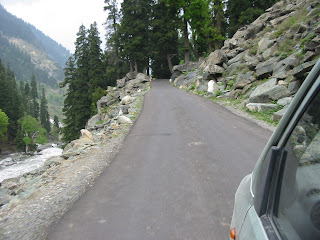Fascinating possibilities
1. "Climbing Australia’s giant red rock Uluru to be banned"
"The rock’s traditional Aboriginal owners’ connection to the site dates back tens of thousands of years and it has great spiritual and cultural significance to them." Source
2. "Tribe rejects plan to build tram, hotel in Grand Canyon"
"Members of the Navajo Nation Council have rejected legislation to build an aerial tram to take paying visitors to a riverside boardwalk in the Grand Canyon in the U.S. Critics showed up to urge lawmakers to oppose the project. They have said the area is sacred and that the proposed development would mar the landscape". Source
3. "In the dim past what we call Hinduism today was prevalent all over the world. Archaeological studies reveal the existence of relics of our Vedic religion in many countries. For instance, excavations have brought up the text of a treaty between Rameses II and the Hittites dating back to the 14th century B. C. In this, the Vedic gods Mitra and Varuna are mentioned as witnesses to the pact.
There is a connection between the name of Ramesses and that of our Rama.
About 75 per cent of the names of places in Madagascar have a Sanskritic origin. In the Western Hemisphere too there is evidence of Hinduism having once flourished there. In Mexico a festival is celebrated at the same time as our Navaratri; it is called "Rama-Sita".
Wherever the earth is dug up images of Ganapati are discovered here. The Aztecs had inhabited Mexico before the Spaniards conquered that land. "Aztecs " must be a distorted form of "Astikas". In Peru, during the time of the holy equinox [vernal? ] worship was conducted in the sun temple. The people of this land were called Incas: "Ina" is one of the Sanskrit names of the sun god. Don't we call Rama Inakula-tilaka? There is book containing photographs of the aborigines of Australia dancing in the nude (The Native Tribes of Central Australia, by Spencer Killan, pages 128 & 129). A close look at the pictures, captioned "Siva Dance", shows that the dancers have a third eye drawn on the forehead." Source
"The rock’s traditional Aboriginal owners’ connection to the site dates back tens of thousands of years and it has great spiritual and cultural significance to them." Source
2. "Tribe rejects plan to build tram, hotel in Grand Canyon"
"Members of the Navajo Nation Council have rejected legislation to build an aerial tram to take paying visitors to a riverside boardwalk in the Grand Canyon in the U.S. Critics showed up to urge lawmakers to oppose the project. They have said the area is sacred and that the proposed development would mar the landscape". Source
3. "In the dim past what we call Hinduism today was prevalent all over the world. Archaeological studies reveal the existence of relics of our Vedic religion in many countries. For instance, excavations have brought up the text of a treaty between Rameses II and the Hittites dating back to the 14th century B. C. In this, the Vedic gods Mitra and Varuna are mentioned as witnesses to the pact.
There is a connection between the name of Ramesses and that of our Rama.
About 75 per cent of the names of places in Madagascar have a Sanskritic origin. In the Western Hemisphere too there is evidence of Hinduism having once flourished there. In Mexico a festival is celebrated at the same time as our Navaratri; it is called "Rama-Sita".
Wherever the earth is dug up images of Ganapati are discovered here. The Aztecs had inhabited Mexico before the Spaniards conquered that land. "Aztecs " must be a distorted form of "Astikas". In Peru, during the time of the holy equinox [vernal? ] worship was conducted in the sun temple. The people of this land were called Incas: "Ina" is one of the Sanskrit names of the sun god. Don't we call Rama Inakula-tilaka? There is book containing photographs of the aborigines of Australia dancing in the nude (The Native Tribes of Central Australia, by Spencer Killan, pages 128 & 129). A close look at the pictures, captioned "Siva Dance", shows that the dancers have a third eye drawn on the forehead." Source


Comments
Post a Comment
i appreciate that you have some thoughts to share, and are taking the effort to do so.